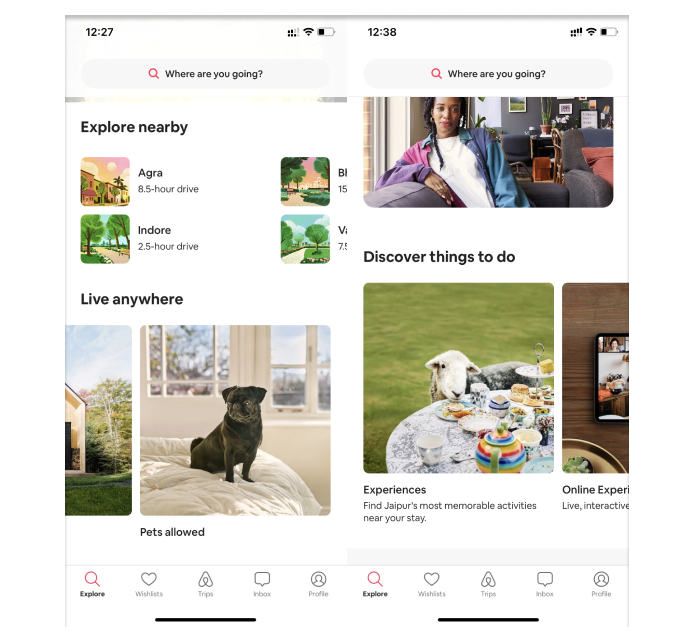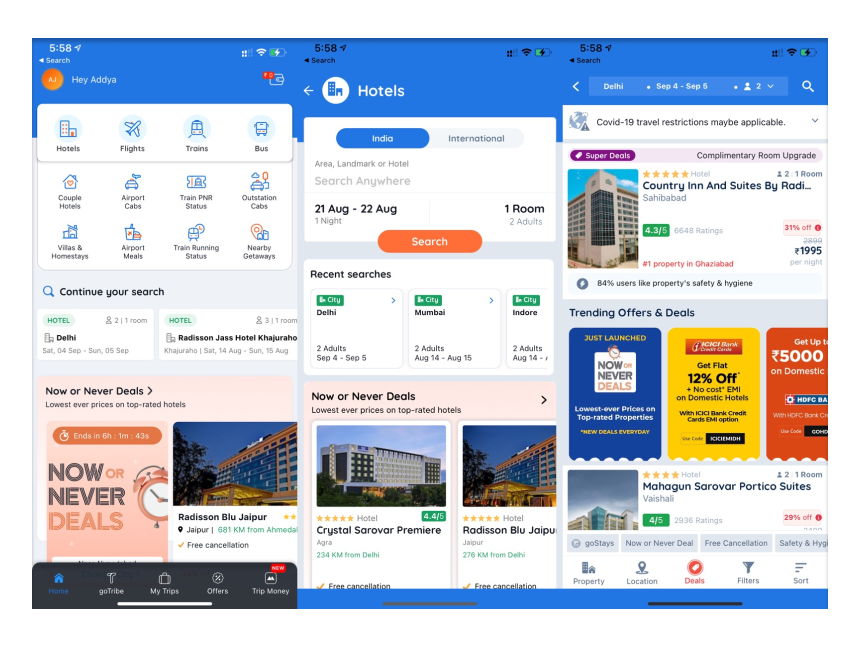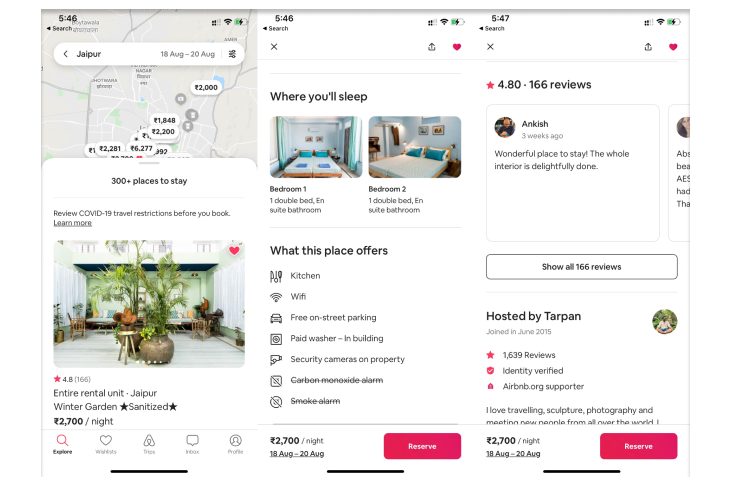Welcome again! With cases decreasing and travel opening up, and most people still working from their homes, there has been an increase in people going for workations and staycations, especially in India. The demand for extended stays coupled with avoiding social contact has boosted vacation rentals bookings. So today for ‘Understanding Nuances’ we have decided to tear down one such product that leads this domain - Airbnb.
Airbnb is extremely popular in India. Given the ever-growing popularity of app in India, we may soon find people using the term 'Airbnb' instead of vacation rental. They are not selling the product but a concept to people, breaking the conventional norms of stays and hotels in India.
We'll begin the teardown by analysing the app's onboarding.
Dual login and Sign up options for first-timers and return users with mobile number and different SSO options.
If you are signing up, it asks you for your basic info. (name, DOB, email) to set up your account. Once you agree to all the terms and conditions, you finally come across the app's landing page.
As part of onboarding, you are asked to register as a guest/ homeowner if you are registering for the first time.
If you are using the product on a desktop you can do a lazy sign-up as with the case with most travel websites. It's interesting to note the lazy-sign is designed keeping in mind that the product shows value before asking anything from the users’ end but when you download the app this doesn't happen. IMO website clicks are random (driven by ads- paid and organic) but app downloads are an informed decision. In the first case, you need to capture the attention by delivering value (i.e. product use case) first and for the second case you need to know your customer well.
Airbnb landing page consists of sections that are actually filtered views of the various app offerings. Let us understand how -
Explore Nearby - Sort by distance/Place
Live Anywhere - Filter by user requirement
Discover Things to do - Find out additional offering
Many travel websites have now pivoted around how they present different product offerings. Categories that were hidden under breadcrumb are now at the landing page of apps. Neuphormism (If you have used CRED, you will know) has taken care of CTA and prioritisation of buttons.
Sales of hotels and vacation rentals on apps/ websites are highly sensitive to price and location. Online travel websites try to optimise their coverage and attrition rate by allowing you to select from a list of areas where you would want to stay, hitting two aims in one go - 1. Displaying their coverage for a particular city. 2. Displaying relevant properties.
In most travel websites you will find that the location filter precedes the price filter, or they are present together. No one asks for a price before confirming the locality you want to stay in. Refer to the sample user flow for booking on Goibibo.
Airbnb combines both price and location for its user on a product listing map for a particular city in a graphical manner. The interesting thing to note here is Airbnb does this not only because it is eye-friendly or interactive but because of non-uniformity in names listed on the page. Airbnb encourages hosts to put more context in the name itself whereas other online hotel travel websites have some sort of uniformity and consistency in their property names and their addresses.
We once had a discussion with a host about running an Airbnb business in general. He mentioned about two things.
Acquisition - Photos. One needs to click some good quality and eye-catching photos of the most beautiful places on the property.
Retention & Word of Mouth Marketing - Hospitality. If the place is not up to their expectations, your hospitality can turn things around.
The emphasis on the photo gallery is clearly visible on the landing page of Airbnb. You can scroll through images without moving into the product page. Airbnb is also aware of what exactly customers search on the product description page (refer to the second part of Airbnb consolidated screenshots). Everything is data-driven. If you are a product manager and are given the task of selecting and prioritizing features, you will look for features that influence your metrics in a positive way, and metrics feed on data. As a matter of fact, you get a long structured review form from Airbnb after trip completion. I believe that can be one important source of data based on which things are decided for product description pages in general.
We are not deep-diving further because that will be part of the post-booking user journey and experience which we’ll cover in the upcoming editions. Today, we just want to end the discussion around the nuances of booking a property on Airbnb.
We’ll be seeing you again with another app and another teardown. Until then, if you liked today’s article and found it helpful please share ‘Understanding Nuances’ among your friends and peers!






